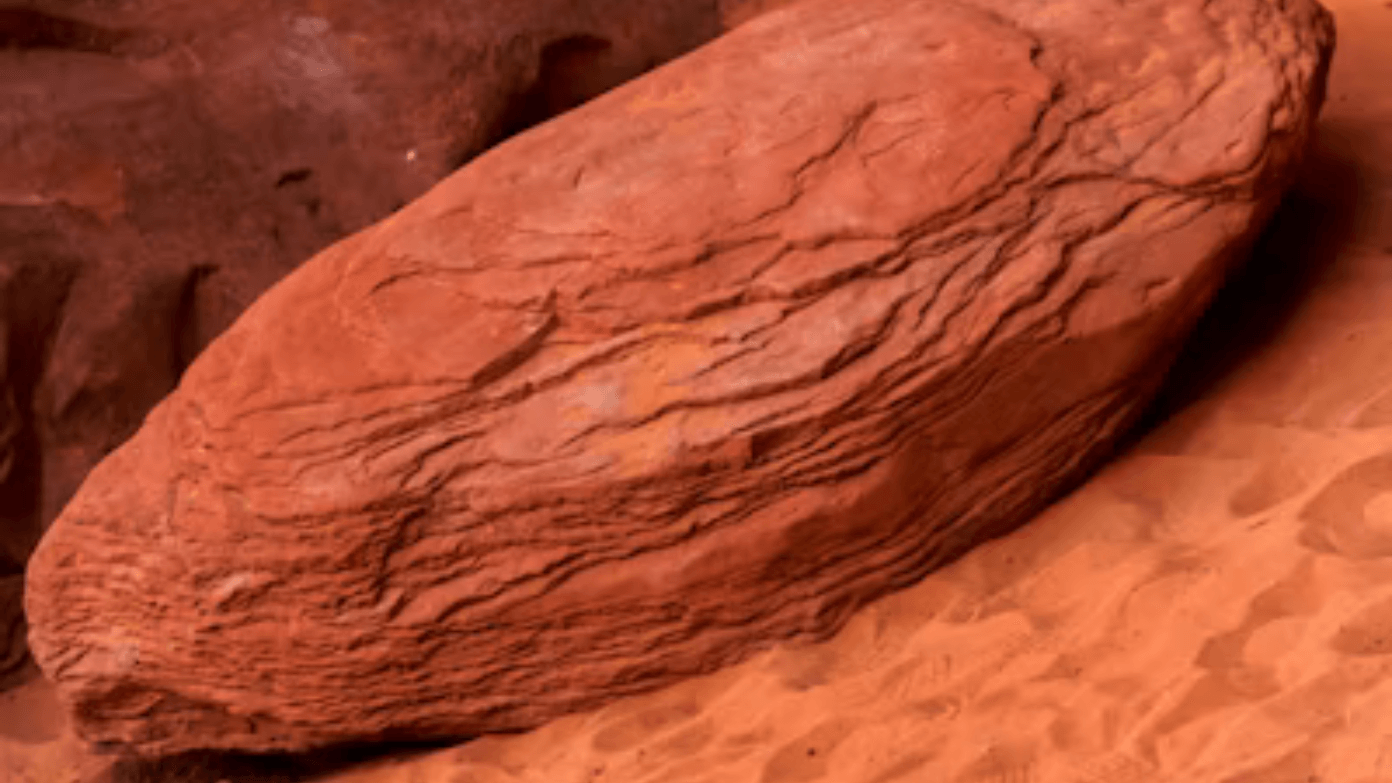In November 2023, a meteorite hunter who worked in the remote Agadez region of Niger uncovered something that would captivate scientists and attract multimillion-dollar bids. What initially appeared to be an ordinary desert rock would be found to be the largest martian ever found on Earth.
From sand in the desert to a treasure of science
The meteorite, named NWA 16788 (Northwest Africa 16788), was found on November 16, 2023, by a nameless meteorite hunter in Niger’s Kefkaf region. The region is more famous for dinosaur bones than for world rocks, so this find came as a shock.
Tipping the scales at a massive 54.4 pounds (24.67 kilograms), NWA 16788 was about 70% bigger than the former record holder, the Taoudenni 002 meteorite discovered in Mali in 2021. The actual meteorite is close to 15 inches by 11 inches by 6 inches, and that telltale reddish-brown fusion crust caught the eye of the seasoned meteorite hunter immediately.
As per norms, a tiny sample of the rock was dispatched to the Shanghai Astronomy Museum for analysis. Scientists at the museum verified what the hunter had suspected: that this was not an ordinary rock from Earth but a true piece of Mars that had traveled 140 million miles in space.
How scientists verify Martian origin
The Martian meteorites depend on a number of advanced analysis methods. Most definitive test employed by researchers is trapped gas analysis, in which the gas composition trapped in the meteorite is compared to the Martian atmospheric composition determined by Viking landers and other missions. Isotopic signature of such gases is absolute evidence for Martian origin.
Further confirmation is provided by oxygen isotope analysis, in which all planetary bodies have unique isotopic signatures. The oxygen isotope signature of NWA 16788 was identical to proven Martian meteorites belonging to the SNC group (Shergottites, Nakhlites, and Chassignites). Physical inspection revealed microscopic shock deformation and molten fusion crust created upon atmospheric entry, as well as crystalline minerals that were created under intense Martian heat and pressure.
The meteorite was identified as an olivine-microgabbroic shergottite, a Martian rock that had resulted from the slow cooling of Martian magma. This identification is especially notable because the gabbroic and microgabbroic Martian meteorites account for only 5.4% of all Martian meteorites.
The journey from Mars to Earth
NWA 16788’s history goes back millions of years when a massive asteroid impact hit Mars with enough energy to propel surface material into space. That powerful impact generated maskelynite, a scarce glass created when the original minerals were melted and transformed under extreme pressure. Approximately 21.2% of the surface of this meteorite is made of shock-produced glass.
Scientists have calculated there are likely only about 19 craters on Mars that are large enough to produce impacts strong enough to throw material out with enough speed to escape the planet’s gravity. The rock was violently thrown out of Mars and floated around for some undefined amount of time before Earth’s gravity caught up with it and blew it through our atmosphere.
The meteorite has very little terrestrial weathering, which means it reached the Sahara Desert very recently and has not been exposed to any considerable environmental impact on Earth. This is especially worth exploring.
Unprecedented rarity and scientific value
The importance of NWA 16788 far outweighs its mass. Of well over 77,000 officially documented meteorites present on our planet, only around 400 have been discovered to be from Mars—just 0.6% of all known meteorites. This one sample alone contributes to some 6.5% of all known Martian material present on our planet.
Sotheby’s vice chairman of science and natural history, Cassandra Hatton, highlighted the importance of the specimen: “This Martian meteorite is the largest piece of Mars we’ve ever discovered by far. So it’s larger than twice as large as what we used to think was the largest piece of Mars.”
Scientifically, the meteorite is worth its weight in gold as it can potentially reveal to us the Martian geological history, atmospheric evolution, and the conditions under which the planet evolved from a warm, moist world to the cold, arid one it exists in now. Its chemistry is comparable to surface rocks analyzed by NASA’s Mars rovers, offering a solid connection to current-day Mars exploration.
Scientific treasure meets commercial reality
Sotheby’s auction house will offer NWA 16788 as part of its Geek Week 2025 natural history auction on July 16, 2025, in New York. The meteorite carries an estimated value of $2 million to $4 million, with bidding starting at $1.6 million.
The auction also features other remarkable specimens, including a nearly complete juvenile Ceratosaurus dinosaur skeleton expected to fetch $4-6 million. This combination of terrestrial and extraterrestrial treasures highlights the growing market for rare natural history specimens.
Read more: What happened to Grok, Elon Musk’s AI chatbot that made antisemitic remarks and praised Adolf Hitler

